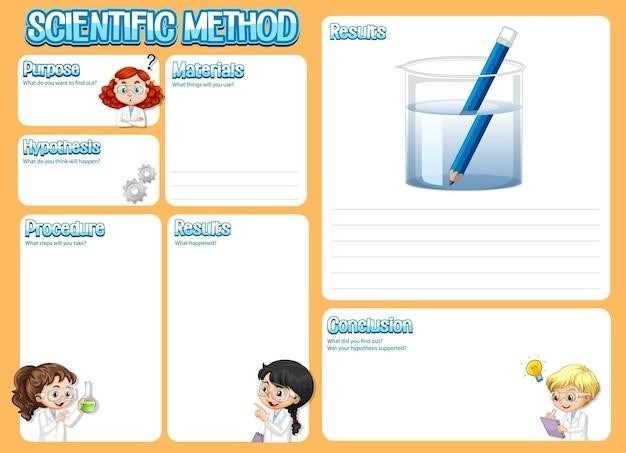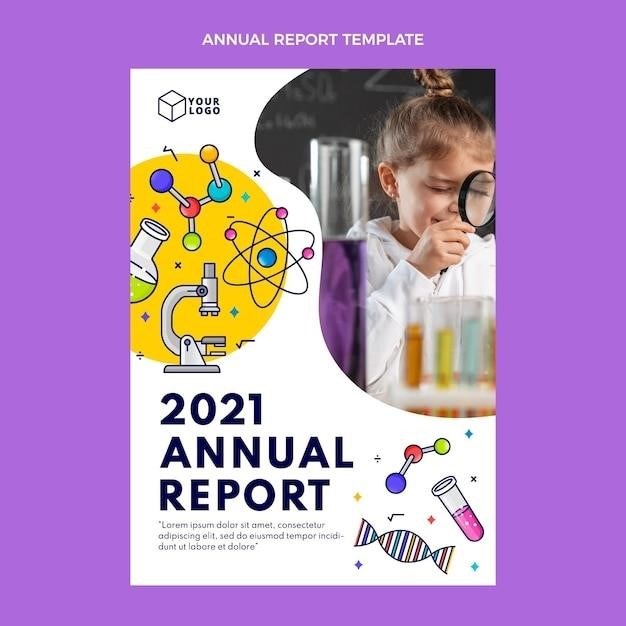
Finding a comprehensive Grade 6 Science test with answers in PDF format can be a valuable resource for students preparing for exams or teachers looking for assessment materials. There are various online platforms and resources that offer practice tests and sample questions, often with answer keys. These resources can help students solidify their understanding of key scientific concepts and identify areas where they need further study. Remember, the best approach is to utilize a combination of resources and practice tests to ensure a well-rounded understanding of the Grade 6 Science curriculum.
Introduction
The transition from elementary to middle school can be an exciting but challenging time for students. As they delve deeper into academic subjects, science becomes a crucial area of study, laying the foundation for future scientific understanding. Grade 6 science introduces students to fundamental concepts, often presented through hands-on experiments and engaging activities. To ensure mastery of these concepts, students may find it beneficial to utilize resources like practice tests with answer keys. These resources offer a structured approach to reviewing the material, identifying strengths and weaknesses, and gaining confidence in their scientific knowledge.
Grade 6 science tests typically cover a wide range of topics, encompassing areas like the properties of matter, energy transformations, the Earth’s systems, ecosystems, and basic biological processes. These tests are designed to assess students’ understanding of key concepts, their ability to apply scientific principles to real-world scenarios, and their proficiency in scientific inquiry.
Accessing reliable Grade 6 Science tests with answers in PDF format can be a valuable tool for both students and educators. For students, it provides a means of self-assessment, identifying areas that require further study and familiarizing themselves with the test format. For teachers, these resources offer a framework for creating assessments, aligning with curriculum standards, and providing targeted instruction to meet individual student needs.
Types of Grade 6 Science Tests
Grade 6 science tests come in various formats, each designed to assess different aspects of student learning. Understanding the different types of tests can help students prepare effectively and teachers create appropriate assessments. Here are some common types of Grade 6 science tests⁚
- Multiple Choice Tests⁚ These tests typically present a question followed by several answer choices, with only one correct option. Multiple-choice tests are widely used to assess knowledge recall and understanding of basic concepts.
- True/False Tests⁚ These tests require students to determine whether a given statement is true or false. They are often used to assess knowledge recall and understanding of factual information;
- Matching Tests⁚ Matching tests present two columns of items, one containing terms and the other containing definitions or descriptions. Students must match the corresponding items from each column. This type of test assesses vocabulary and the ability to associate concepts.
- Short Answer Tests⁚ Short answer tests require students to provide brief written responses to open-ended questions. They assess comprehension, analysis, and the ability to express ideas concisely.
- Essay Tests⁚ Essay tests ask students to write extended responses to a specific prompt, demonstrating their understanding of concepts, their ability to synthesize information, and their writing skills.
- Performance-Based Assessments⁚ These assessments involve students demonstrating their knowledge and skills through hands-on activities, experiments, or projects. They assess critical thinking, problem-solving, and scientific inquiry.
The specific types of tests used in a particular classroom or school district may vary depending on curriculum standards, assessment policies, and teacher preferences. Understanding the different types of tests can help students prepare effectively and teachers create assessments that accurately reflect student learning.
Practice Tests and Resources
For students preparing for a Grade 6 Science test, practice tests and study resources can be invaluable tools for success. These resources provide exposure to test formats, question types, and content areas, helping students build confidence and identify areas that need further review. Here are some common sources of Grade 6 Science practice tests and resources⁚
- Online Platforms⁚ Websites dedicated to education often offer free practice tests and quizzes covering various subjects, including science. These platforms typically provide answer keys and scoring feedback to help students assess their progress.
- Textbooks and Workbooks⁚ Many Grade 6 science textbooks and workbooks include practice tests and review exercises designed to reinforce key concepts and prepare students for assessments.
- Educational Publishers⁚ Educational publishers often offer online resources, including practice tests and study guides, to accompany their textbooks and curriculum materials.
- Teacher Websites⁚ Teachers often create and share their own practice tests, worksheets, and other resources online. These resources can be valuable for students looking for additional practice or targeted review materials.
- Learning Apps⁚ Numerous educational apps are available for smartphones and tablets that offer interactive science quizzes, games, and learning activities. These apps can provide a fun and engaging way to review concepts and build knowledge.
When selecting practice tests and resources, it’s important to ensure they align with the specific curriculum and standards covered in the Grade 6 Science course. Students should aim for a variety of resources to gain a comprehensive understanding of the subject matter and build confidence in their test-taking abilities.
Preparing for the Grade 6 Science Test
Preparing for a Grade 6 Science test requires a combination of focused study, practice, and understanding of the key concepts. Here are some strategies to help students effectively prepare for their science assessment⁚

- Review the Curriculum⁚ Start by reviewing the Grade 6 Science curriculum, focusing on the main topics and learning objectives. Understand the specific areas of science that will be covered on the test.
- Utilize Textbook and Notes⁚ Go through the science textbook and notes taken throughout the year, highlighting key concepts, definitions, and important experiments.
- Practice with Sample Questions⁚ Work through practice tests and sample questions from various resources to get familiar with the test format, question types, and difficulty level.
- Focus on Difficult Areas⁚ Identify areas where you struggle or need more practice. Allocate more time to review these concepts and seek clarification from teachers or tutors.
- Study in a Focused Environment⁚ Find a quiet and comfortable space to study, free from distractions. Set aside dedicated time for studying and avoid multitasking.
- Get Enough Sleep⁚ Ensure you get enough sleep the night before the test. A well-rested mind is better able to process information and perform at its best.
- Eat a Healthy Breakfast⁚ Start the day with a nutritious breakfast to provide energy and focus for the test.
- Arrive on Time⁚ Plan your route and arrive at the test location with plenty of time to spare. This will reduce stress and allow you to settle in before the exam begins.
Remember, effective preparation involves a combination of active learning, practice, and a positive mindset. By following these strategies, students can build confidence and feel prepared to tackle their Grade 6 Science test.
Understanding the Test Format
To excel on a Grade 6 Science test, it’s essential to understand the format and types of questions you’ll encounter. Most Grade 6 Science tests follow a standardized structure, incorporating multiple-choice questions, true/false statements, matching sections, and short-answer or essay questions. Familiarizing yourself with these question formats can enhance your test-taking strategies and improve your performance.
- Multiple-Choice Questions⁚ These questions typically present a scenario or concept followed by several answer options. You need to select the most accurate or appropriate answer based on your understanding of the subject matter.
- True/False Statements⁚ These questions require you to determine whether a given statement is true or false. Carefully read each statement and consider its accuracy based on scientific knowledge.
- Matching Sections⁚ These questions involve matching terms, definitions, concepts, or diagrams. Pay close attention to the instructions and use your knowledge to establish accurate pairings.
- Short-Answer or Essay Questions⁚ These questions demand more comprehensive responses. They often require you to explain concepts, provide evidence, or describe a process. Organize your thoughts clearly and express your answers in complete sentences.
By understanding the test format and question types, students can better anticipate the challenges they might face. Practice answering different types of questions to build confidence and develop effective test-taking skills.
Sample Test Questions
To gain a better understanding of the types of questions you might encounter on a Grade 6 Science test, let’s explore some sample questions that cover various topics within the curriculum⁚
- Question 1⁚ What is the process by which plants make their own food?
- A. Photosynthesis
- B. Respiration
- C. Digestion
- D. Evaporation
- Question 2⁚ Which of the following is NOT a type of simple machine?
- A. Lever
- B. Pulley
- C. Wheel and Axle
- D. Telescope
- Question 3⁚ Explain the difference between a conductor and an insulator in terms of how they interact with electricity.
- Question 4⁚ Draw a diagram showing the different layers of the Earth. Label each layer and briefly describe its characteristics.
These sample questions provide a glimpse into the range of topics and question formats that might be included in a Grade 6 Science test. By reviewing similar questions and understanding the concepts behind them, students can prepare effectively for their exams.
Answer Keys and Scoring
Answer keys and scoring rubrics are essential components of any effective science test. They provide a clear and consistent standard for evaluating student performance and understanding their mastery of the subject matter. When searching for Grade 6 Science tests with answers in PDF format, it’s important to look for resources that include comprehensive answer keys and scoring guidelines.
Answer keys typically provide the correct answers to multiple-choice questions, while scoring rubrics offer detailed criteria for evaluating constructed-response questions, such as essays or lab reports. These rubrics often outline specific points that students should address, the quality of their explanations, and the accuracy of their scientific reasoning.
By using answer keys and scoring rubrics, teachers can ensure fairness and consistency in grading, providing students with valuable feedback on their understanding of the concepts. This feedback can help students identify areas where they need improvement and guide their future learning.
Grade 6 Science Curriculum
The Grade 6 Science curriculum typically covers a wide range of topics that build upon the foundational knowledge acquired in earlier grades. Students delve deeper into fundamental scientific concepts, exploring key areas such as matter and its properties, energy and its transformations, forces and motion, the Earth’s systems, and life science.
The curriculum emphasizes hands-on learning through experiments, investigations, and real-world applications. Students learn to design experiments, collect and analyze data, draw conclusions, and communicate their findings effectively. They also develop critical thinking skills and learn to apply scientific principles to solve problems and make informed decisions.
The specific content covered in Grade 6 Science may vary depending on the educational standards and frameworks used in different regions. However, common themes include understanding the scientific method, investigating the properties of matter, exploring the interactions between matter and energy, studying the Earth’s systems and their interconnectedness, and learning about the diversity of life on Earth.
In conclusion, access to Grade 6 Science tests with answers in PDF format can be a valuable tool for both students and educators. These resources provide a structured and comprehensive way to assess understanding of key scientific concepts, identify areas for improvement, and reinforce learning. While practice tests should not be solely relied upon for preparation, they can serve as a valuable supplement to classroom instruction and independent study.
By utilizing available resources and engaging in active learning, students can develop a strong foundation in science and prepare themselves for future academic success. Educators can leverage these resources to enhance their teaching strategies, provide targeted support to students, and create a stimulating learning environment that encourages scientific inquiry and critical thinking. The pursuit of scientific knowledge is an ongoing journey, and access to appropriate resources can empower students to explore the wonders of the natural world with confidence and enthusiasm.












